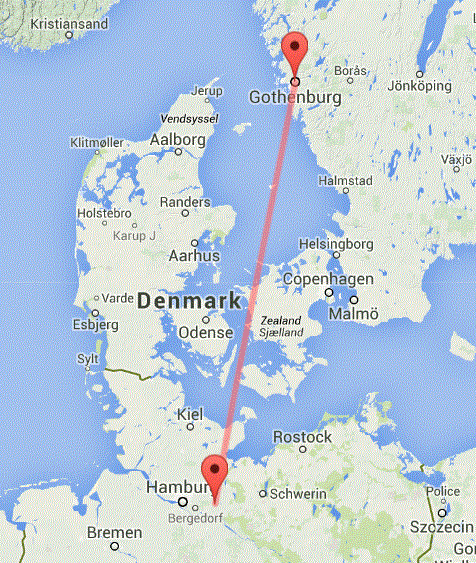Find by Christer Stone of Sweden, 25cm tall
Christer Stone writes for portablerockart.com: "Here is the story how I found it. I was about ten years old and was on summer holidays which I used to spend with my parents at my grandparents cottage near Gothenburg in Sweden. Me and my brother used to catch lizards and snakes in the area. I discovered it by coincidence when I was looking for reptiles. It was half buried in the ground and only possible to resemble an eye.
The eye made me curious of the rest so I brushed some loose sand off it. It was hard to get it loose from the ground and I was afraid my older brother would see me digging and claim that it was his find. I covered it up with the loose sand and ran to tell my mother about it and we went back looking for the head but did not find it.
The stone head have consigned to oblivion but twenty years later I made a nostalgic trip to my summer childhood area. Sitting and looking at the ground I saw something which resembled an eye. Instantly I recognized and remember the find I tried to dig up so many years ago. It clearly appeared to be a head of a man, with very recognizable features."
Christer Stone: "It looks like the lips have rotted and the teeth are visible."
Close up of the right eye of the human head sculpture
Anaglyph three dimensional photo requires 3D red/cyan eye glasses
Anaglyph three dimensional photo requires 3D red/cyan eye glasses
The Gothenburg, Sweden, find location of the flint head is 475km distance from the site at Groß Pampau, Germany, discovered by Ursel Benekendorff where the "one eye missing" motif may be seen as early as c. 500,000 years ago.
To my eye, this is a mimetolith which looks to have been enhanced with some human modifications. Here it is considered a sculpture, or perhaps more accurately, a proto-sculpture. This object fits the known palaeoart motif of a human face mask with right eye open, left eye closed or missing, and with distortion to the left side of the face. There are many examples of this seen on this blog.
My findings suggest the distortion to the left side of the face and missing eye are symbolic of a lion's bite to the head in this motif. Someone in the past likely found this object and was inspired by its natural likeness to a human head in the desired motif form. It was likely curated and treated as a cultural object.
Archaeology is "skeptical" (has chosen to remain ignorant) of the nature of these kinds of objects but a competent petrologist or flint knapper may be able to identify some parts of the stone which have seen the work of the human hand. The left eye in particular has had the cortex or outer rind of the stone removed to expose the fresher flint inside. The mouth and nose area may also have human modifications to complete the desired form as it includes "teeth" as seen in many other portable rock art human head figures.
Mousterian "one eye missing" sculpture, c. 200,000 years before present






.jpg)
No comments:
Post a Comment